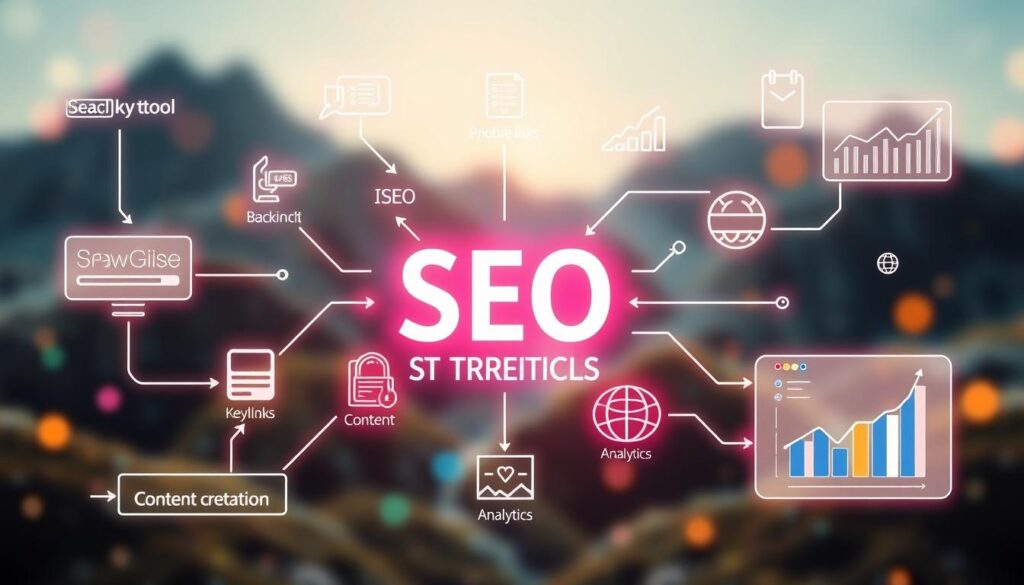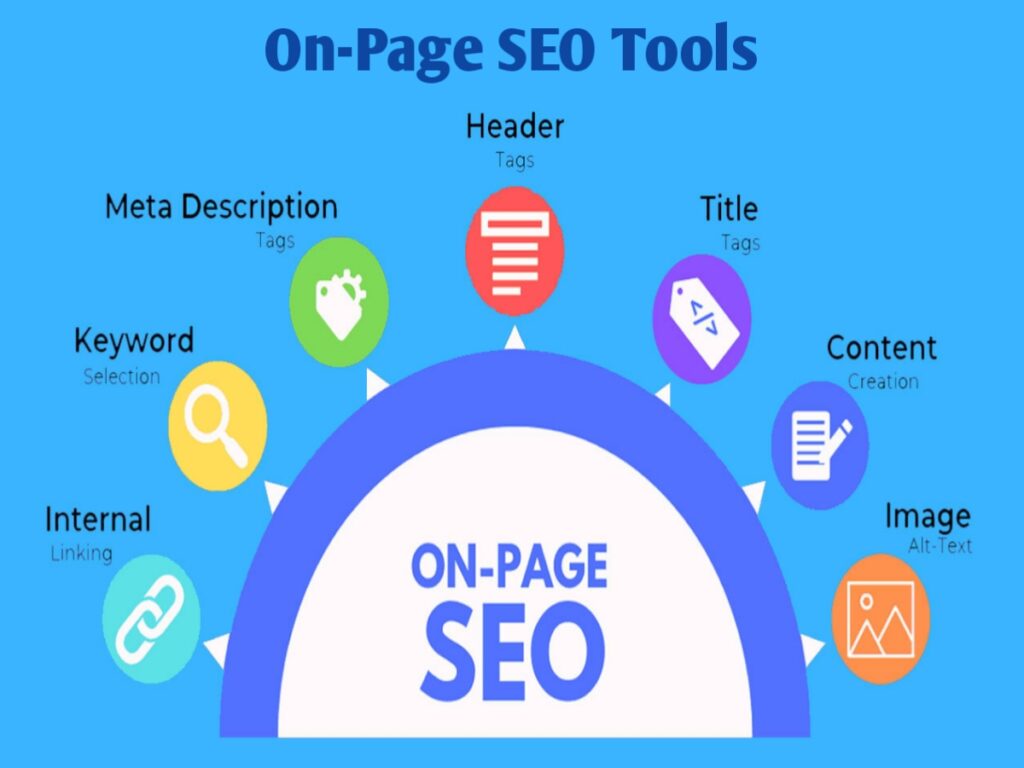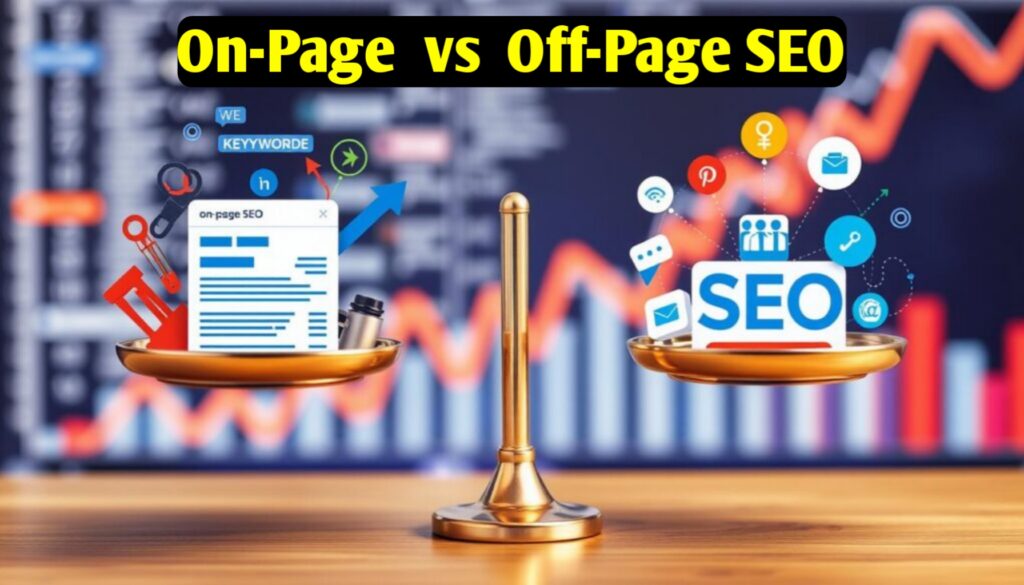What is seo in digital marketing with examples?

Search engine optimization, or SEO, is about making websites and online content better. This helps them show up higher in search engine results. It brings more people to a business’s site who are actually looking for what they offer.
SEO uses many techniques. These include making the website itself better (on-page optimization), getting links from other sites (off-page optimization), and making sure the site works well (technical SEO). By using SEO, businesses can get more people to see their site, find better customers, and make more money.
Key Takeaways
- SEO is the practice of optimizing websites and content to rank higher on search engine results pages.
- SEO techniques include on-page optimization, off-page optimization, and technical SEO.
- Implementing SEO can improve a business’s online visibility, drive more qualified leads, and increase sales and revenue.
- Search engines like Google use various ranking factors to determine the most relevant and authoritative websites for each search query.
- Conducting keyword research is a fundamental step in developing an effective SEO strategy.
Understanding Search Engine Optimization (SEO)

SEO helps your website show up higher in search results. This means more people can find your site. It’s key in digital marketing because most users only look at the first page of results.
By knowing how search engines like Google work, you can use SEO to make your site more visible and trusted.
Table of Contents
What is SEO and How Does it Work?
SEO is about talking to search engines in a way they understand. Search engines use algorithms to check websites. They look at the quality and relevance of content, the site’s structure and technical details, and how trustworthy the site is.
The goal is to show users the best results for what they’re searching for. This is based on their search queries and what they’re looking for.
To get better rankings, optimize your website’s content, structure, and technical parts. This makes your site more relevant and authoritative to search engines.
Use strategies like keyword research, creating great content, optimizing on-page elements, building backlinks, and making sure your site is technically sound. This can lead to more traffic that’s interested in what you offer.
On-Page SEO Optimization
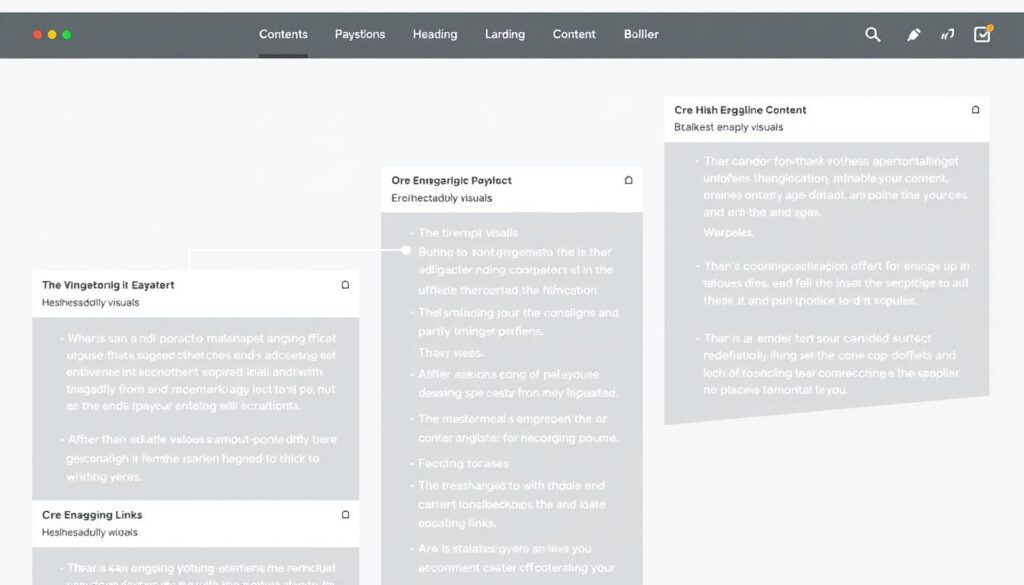
As a digital marketer, I know how key on-page SEO is. It makes a website more visible and boosts its search engine rankings. This means making each web page better for search results. I tweak things like title tags, meta descriptions, headers, tags, images, links, and content to make the site more useful and valuable to search engines.
Examples of On-Page SEO Techniques
One big on-page SEO trick is keyword optimization. I add the right keywords to content, title tags, and meta descriptions. This helps search engines get what the page is about. Long-tail keywords, being more specific, are often better for this.
Another key part is content structure and organization. I use header tags (H1, H2, H3) to make the content easy to follow. Internal linking helps users and search engines navigate the site better.
Image optimization is also vital. I make images better by adding relevant alt-text and file names. This makes the site more user-friendly and tells search engines the content is relevant.
By using these on-page SEO methods, I can make a website more visible in search results. This brings more organic traffic and improves how users interact with the site.
Off-Page SEO Optimization

On-page SEO focuses on your website’s content and structure. Off-page SEO, on the other hand, involves actions outside your site to boost rankings. The key off-page technique is link building, getting backlinks from other quality sites.
Examples of Off-Page SEO Techniques
Other off-page SEO methods include content marketing, social media marketing, influencer marketing, and guest posting. These strategies increase your site’s credibility and visibility. They help search engines see your site as more authoritative.
Link building through broken link building and unlinked brand mentions can get you valuable backlinks. These links show search engines your content is top-notch. Content marketing also helps by attracting natural links and showing your expertise.
Social media marketing and influencer marketing are key for off-page SEO. They make your site more discoverable and credible. They also open up more link building chances. By engaging with your audience and working with influencers, you can drive more traffic to your site.
Guest posting on industry blogs and publications can expand your brand’s reach. It also gets you valuable backlinks from trusted sources. This strengthens your off-page SEO efforts.
Technical SEO Optimization

Technical SEO is the behind-the-scenes work that makes your website fast and easy for search engines to find. It’s a key part of search engine optimization. It improves your site structure, site speed, mobile-friendliness, crawlability, indexability, and schema markup.
For example, using HTTPS since 2014 helps protect your users’ data. Fixing duplicate content issues stops unwanted URLs from ranking. It also keeps your backlinks strong.
Page speed is a big deal, as it affects rankings on both mobile and desktop. Google now focuses on mobile users first. Tools like PageSpeed Insights help find ways to make your site faster.
Improving your site’s architecture and using schema markup makes it easier for search engines to crawl and index. This boosts your website’s performance and user experience.
While technical SEO might seem hard, it’s worth it. It can greatly improve your website’s performance and search rankings. By focusing on these technical aspects, you’ll enhance your digital marketing strategy.
What is seo in digital marketing with examples?
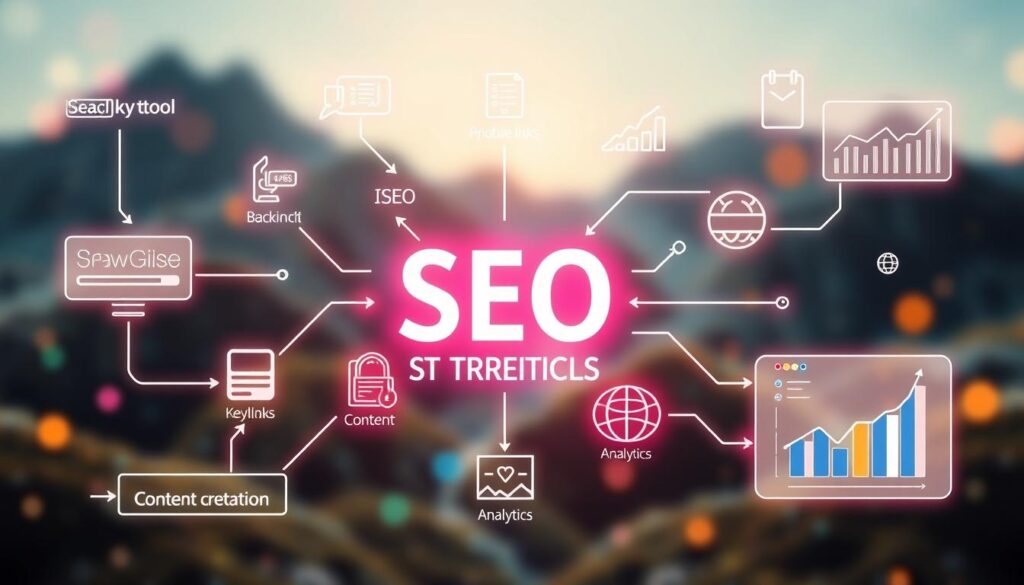
Search engine optimization (SEO) is key in digital marketing. It helps websites show up better in search results. This brings more people to the site, leading to more sales.
SEO means making your website and content better for search engines. This includes using the right content marketing and keyword research. It also means getting more backlinks and improving website traffic and lead generation.
SEO can really help businesses grow. By ranking higher, they get more customers. This means more sales and return on investment (ROI). Plus, good SEO content keeps bringing in visitors and leads over time.
SEO is a powerful tool for all kinds of businesses. Keeping up with SEO trends helps them reach their goals. By optimizing their online presence, they can get the most out of search engine optimization and see real results in their digital marketing efforts.
Keyword Research and Strategy
Effective keyword research is key to a good SEO strategy. It’s about finding the right keywords your audience uses and making your content rank high for them. Understanding search intent, search volume, and keyword targeting helps you create a strong keyword strategy. This strategy brings more relevant traffic to your site.
Steps in Keyword Research
Here are the main steps for thorough keyword research:
1. Start with Seed Keywords: Begin with a list of relevant, high-level seed keywords that describe your products or services. These seed keywords are the base for your research.
2. Expand Your Keyword List: Use tools like AnswerThePublic.com and Question DB to find long-tail question-based keywords with less competition. Also, try SeedKeywords.com to get creative keyword ideas by asking how people search for your products or services.
3. Analyze Competitor Keywords: Look at the keywords your competitors use with tools like Ahrefs and SEMrush. This gives you insights into the keyword landscape and helps with content planning.
4. Assess Keyword Metrics: Check the search volume, keyword difficulty, and search intent for each keyword. Choose keywords with high search volume and low competition for better ranking chances.
5. Refine and Optimize: Keep improving your keyword research and keyword strategy by monitoring your results and adjusting your content. Stay updated with the latest keyword research best practices to keep your SEO strategy strong.
By following these steps, you can create a detailed keyword research and keyword strategy. This will help you attract the right audience and achieve meaningful results for your business.
Measuring and Analyzing SEO Performance
Tracking and analyzing your SEO metrics is key to understanding your optimization efforts’ impact. It helps you spot areas for improvement. By watching key performance indicators, you can make better decisions to boost your website’s visibility and conversions. Important SEO performance metrics include:
Organic Traffic
See how well your webpages rank for keywords by comparing visits from organic search to your competitors’. This shows your website’s search engine performance.
Keyword Rankings
Track your website’s position on search engine results pages (SERP) for specific keywords. Use monitoring tools to observe ranking changes. This helps you optimize content and improve visibility.
SERP Visibility
Check how often and how prominently your website shows up on search results. Use tracking tools’ visibility index for this. It helps you optimize content and boost your SEO performance.
Conversions
Look at the completion of desired actions on your website. This measures how well your webpages turn visitors into leads or customers. It’s a key metric for understanding your return on investment (ROI).
By regularly checking these SEO metrics, you can make smart decisions. You can refine your strategies and drive growth for your digital presence.
Conclusion
Search engine optimization (SEO) is key for any digital marketing plan. It helps websites rank higher in search results. This brings more visitors and leads to more sales.
By using a detailed SEO strategy, businesses can grow online. They can build trust with customers and grow over time. This is done through on-page, off-page, and technical optimization.
Frequently Asked Questions
1. What is SEO in digital marketing?
SEO, or Search Engine Optimization, is the process of improving a website to enhance its visibility in search engine results pages (SERPs) such as Google. This involves optimizing a site’s content, structure, and links to make it more attractive to search engines.
2. Why is SEO important?
SEO is key because it drives organic traffic to a website, which can lead to brand exposure, credibility, and potential sales. Unlike paid ads, SEO earns visibility through relevance and quality.
3. What are some examples of effective SEO strategies?
Effective SEO strategies include keyword research, on-page optimization such as meta tags and headers, creating high-quality content, building backlinks, and improving site usability and speed.
4. How do keywords influence SEO?
Keywords are the terms people type into search engines. By optimizing content with relevant keywords, businesses can attract users who are actively seeking their products or services.
5. Can you give an example of on-page SEO?
On-page SEO involves optimizing individual pages to rank higher, like using targeted keywords in titles, meta descriptions, and within the text. For instance, an article titled “Best Running Shoes 2024” might use keywords like “top running shoes” to improve visibility.
6. How does SEO differ from paid search marketing?
SEO focuses on organic search results gained through optimizing site content and performance. Paid search marketing, like Google Ads, involves paying for visibility on search engine results pages.
7. What role do backlinks play in SEO?
Backlinks, or incoming links from other websites, signal to search engines that your content is valuable and credible. High-quality backlinks can significantly boost a website’s ranking in search results.
8. How often should SEO be updated?
SEO isn’t a one-time task. It requires continuous updates to adapt to changes in search engine algorithms and trends. Regularly updating content and SEO strategies can maintain or improve a site’s search ranking.
9. What does ‘technical SEO’ mean?
Technical SEO refers to optimizing the infrastructure of a site, ensuring that it’s fast, mobile-friendly, and easy for search engines to crawl and index.
11. Is local SEO different from regular SEO?
Local SEO targets searches in a specific geographic area. It’s crucial for businesses that operate locally, helping them appear in local search results and Google Maps. Techniques include optimizing Google My Business listings and gathering positive local reviews.
